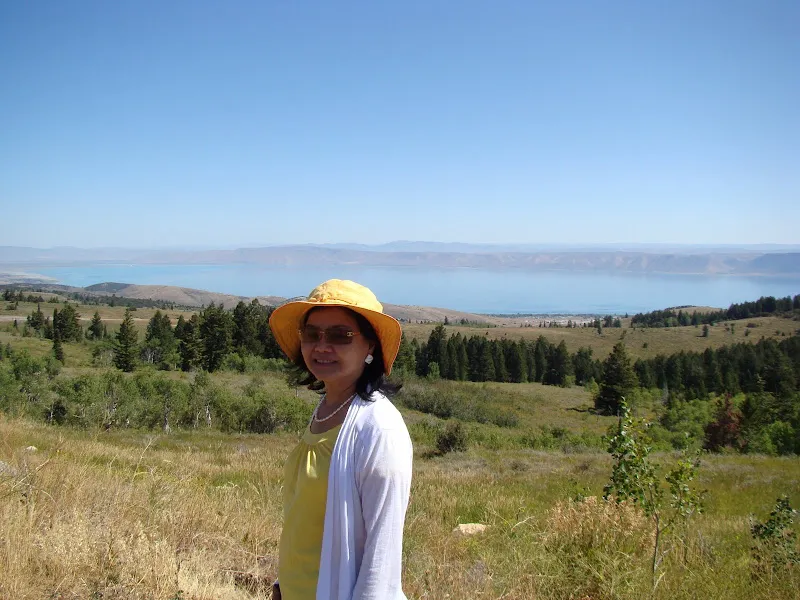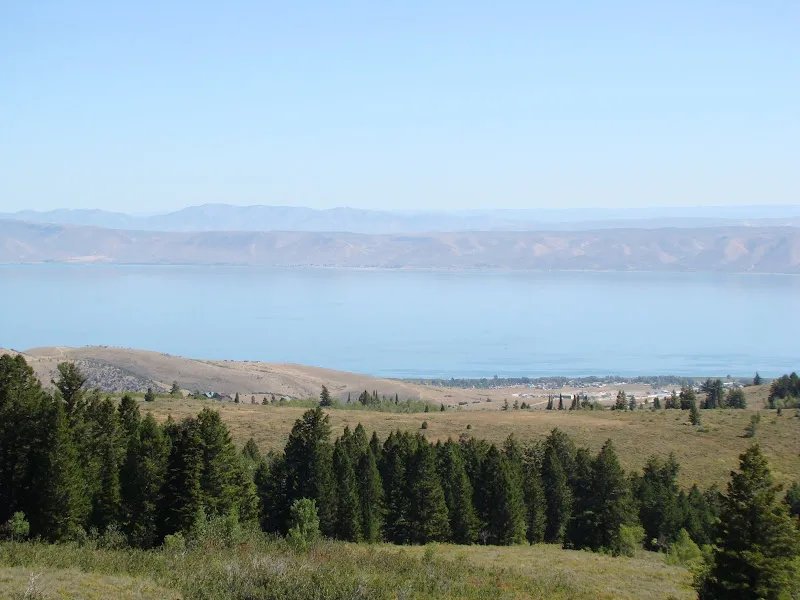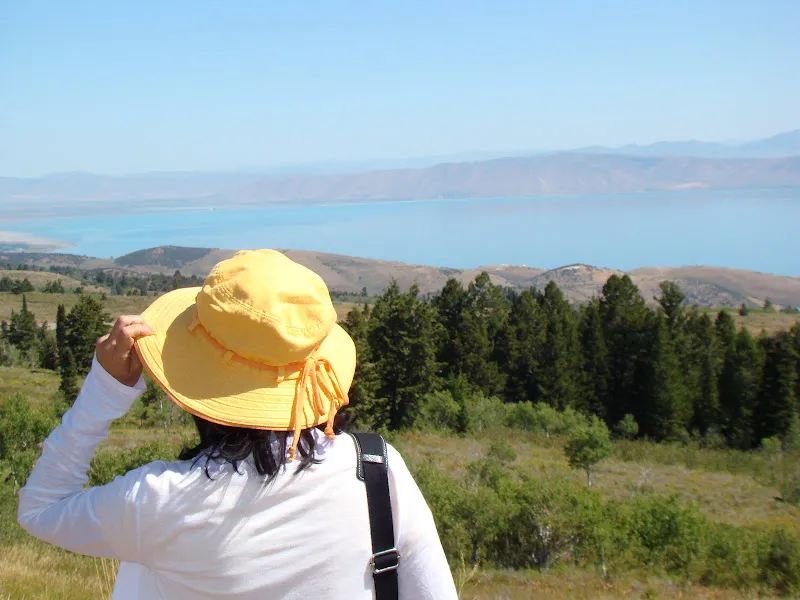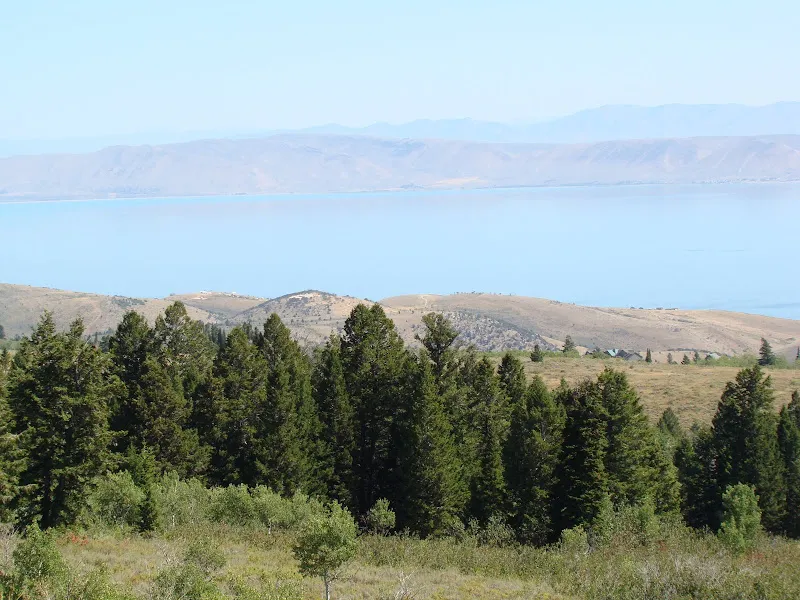Wyoming, a vast and diverse state in the American West, is renowned not only for its majestic natural landscapes like Yellowstone and Grand Teton National Parks but also for its rich history. Unbeknownst to many, before becoming a popular tourist destination, Wyoming was a crucial crossroads, witnessing the passage of the first wagon trains on their journey to conquer the wild West. The story of these wagon trains is not just a tale of geographical exploration but also an epic of human perseverance, aspiration, and pioneering spirit.
In this article, we will journey back in time to uncover the profound historical imprints left by the first wagon trains on the land of Wyoming. From the intricate network of trails and landmarks steeped in history to the moving stories of life and the challenges faced by these pioneers, everything will be vividly and authentically recreated. Join “Du lịch khắp thế gian” as we embark on a historical exploration of Wyoming from a unique perspective, to better understand this land and the stories hidden beneath its pristine beauty.
Opening the West: Wyoming’s Role as a Crossroads
In the 19th century, as the dream of a bountiful and free West beckoned thousands of Americans, Wyoming became a vital transportation hub on the major overland routes. This land, with its varied terrain ranging from rugged mountains to vast prairies, witnessed the formation and development of historic trails that played a decisive role in expanding territory and shaping the culture of the American West.
One of the most famous wagon train routes through Wyoming was the Oregon Trail. This trail, stretching over 2,000 miles from Missouri to Oregon, became the main artery for hundreds of thousands of migrants, traders, and explorers. Throughout the first half of the 19th century, the Oregon Trail saw endless lines of wagons, carrying families, possessions, and hopes for a new life in the West.
Alongside the Oregon Trail, the Mormon Trail also played a significant role in Wyoming’s history. This trail was pioneered by Mormon settlers in 1847 as they sought a safe haven to practice their religion. Although shorter than the Oregon Trail, the Mormon Trail held immense spiritual significance for the Mormon community and contributed to the development of the Salt Lake City area near Wyoming.
Additionally, the California Trail, a branch of the Oregon Trail, also passed through Wyoming, heading towards Southern California, where the gold rush attracted thousands seeking fortune. The intersection of these three major trails in Wyoming transformed it into a crucial crossroads where wagon trains from all directions converged, shared experiences, and continued their westward journeys.
Wyoming was not only a junction of trails but also a place where natural landmarks served as vital milestones for wagon trains. Independence Rock, a massive granite monolith standing prominently on the prairie, is a prime example. Wagon trains often aimed to reach Independence Rock by or before Independence Day (July 4th) to ensure they had enough time to cross the mountains before the harsh winter. Independence Rock was not just a geographical marker but also a giant “rock journal,” with thousands of names and messages inscribed on its surface by travelers of yesteryear.
Bear Lake, located on the border between Wyoming and Idaho (actually Utah and Idaho, perhaps the original author’s mistake), was also an important stop on the westward journey. This stunning freshwater lake, with its distinctive turquoise color, provided a precious source of water and food for wagon trains after long, tiring stretches. The dreamy scenery of Bear Lake, likened to the “Caribbean of the Rockies,” must have offered relaxation and renewed motivation to the pioneers on their arduous journey.

Bear Lake, with its Caribbean-like beauty amidst the Rocky Mountains, was a green oasis for early wagon trains.
Life on Wheels: Trials and Tribulations
Life for the first wagon trains to Wyoming was far from easy. They faced countless hardships and challenges on journeys lasting months, traversing treacherous terrains, harsh weather, and the dangers of the wilderness.
Wyoming’s terrain was incredibly diverse, from vast plains to towering mountains. Wagon trains had to navigate steep slopes, swift rivers, and arid deserts. Wagons frequently got stuck or broke down, and repairs in the wilderness were no simple matter.
Weather in Wyoming was also notoriously unpredictable. Summers could be scorching hot, while winters were frigid with blizzards. Wagon trains had to prepare for all weather conditions, from intense heat to sudden downpours and severe snowstorms that could strike at any time.
Dangers from the wilderness were ever-present. Wagon trains faced the risk of getting lost, running out of water and food, and succumbing to illness. They also had to be wary of dangerous wildlife such as bears, wolves, and venomous snakes.
Relations with Native Americans were also a complex issue. While there were many instances of Native American tribes helping wagon trains, conflicts and tensions also arose due to territorial and resource encroachment.
However, overcoming all these difficulties and hardships, the spirit of unity and perseverance helped wagon trains conquer every challenge. They shared food and water, helped each other repair wagons, and protected each other from danger. Common hardships forged strong bonds among the members of the wagon trains, turning strangers into trusted companions.

River crossings were among the major challenges faced by wagon trains on their journey to Wyoming.
Cultural and Historical Legacy: Wyoming Today
The first wagon trains to Wyoming left their mark not only on the landscape but also contributed to shaping the culture and history of this land. The old trails have now become historical sites, attracting visitors from around the world to explore and learn about the heroic past of the West.
Today, visitors can hike sections of the Oregon, Mormon, or California Trails, feeling the hardships and resilience of the pioneers. Many historical sites related to wagon trains have been preserved and opened to the public, such as Independence Rock, the National Historic Trails Interpretive Center in Casper, Wyoming, and numerous other local museums.
The stories of the first wagon trains to Wyoming are not just heroic historical accounts but also a source of inspiration for future generations. The pioneering spirit, perseverance, and ability to overcome difficulties of the early travelers remain valuable and serve as a precious lesson for us today.
When visiting Wyoming, tourists can not only admire the stunning natural scenery but also have the opportunity to explore an important part of American history. Take time to visit historical sites, learn about the stories of the first wagon trains, and feel the wild West spirit that still lives on in Wyoming.

Independence Rock, where thousands of travelers inscribed their names, marking their journey West.
Conclusion
The story of the first wagon trains to Wyoming is an indispensable part of the tapestry of American West history. Their journey was not just a geographical conquest but also a struggle against nature, against themselves, and a testament to the strength of the human spirit. Wyoming, with its role as a crucial crossroads on the overland routes, witnessed the first steps opening the way to the West, and those historical imprints remain alive to this day.
Come to Wyoming, not only to admire the beautiful scenery but also to listen to the echoes of history, to feel the pioneering spirit of the first wagon trains, and to better understand this special land. Wyoming is not just a tourist destination but also a living museum, preserving heroic stories of the past and inspiring the future.

The raw and majestic beauty of Wyoming, a land marked by the passage of the first wagon trains.